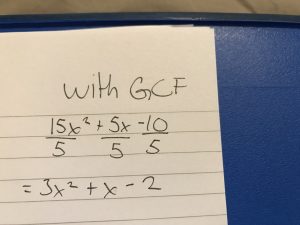This week in math we learned about systems which are a set of equations that help us solve for variables, algebraically they’re two ways to solve these equations, substitution and elimination, you can also graph these equations by putting the equations into slope-intercept for and graphing each equation using the y-intercept and slope.
The one I prefer is elimination. In elimination your goal is to try to get a zero pair to eliminate one of the variables, with elimination you can add or subtract your variables. Once you find the value of one variable you can substitute it in to find the other(s), Then to verify substitute in all variable that you have found into an original equation and see if it add up and makes sense.













